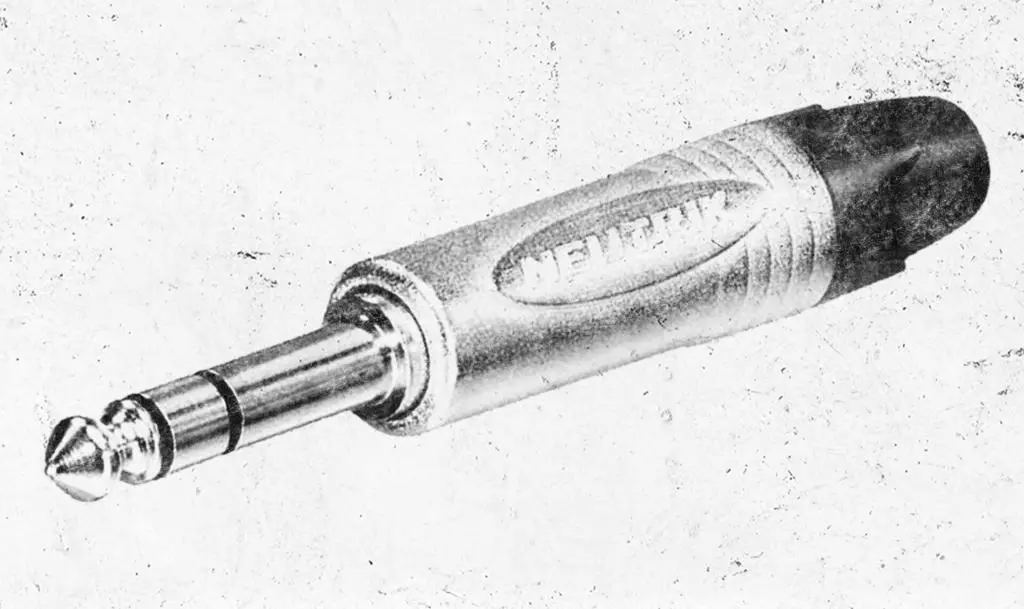Jack is the “male-gender” connector, a part of a interconnecting cable, typically mounted to a panel or piece of a gear. There isn’t a specific signal flow for a jack. A jack can carry either input or output signals. Though the terms jack and plug are often used interchangeably, there is a distinct difference between the jacks and plugs.

What is Jack? Table of Contents
A jack is a type of male connector that is essential in audio equipment. It is used to connect audio devices such as headphones, microphones, and speakers to other devices such as audio interfaces, amplifiers, and mixers.
Anatomy of a Jack
A jack is a cylindrical metal shaft with a series of metal rings/sleeves that make contact with the corresponding contacts in female jacks when it is inserted. The number of rings/sleeves on a jack determines how many channels or signals can be transmitted. The most common sizes for jacks are 1/4 inch (6.35mm) and 1/8 inch (3.5mm), although other sizes exist for specialized applications. There are different types of jacks, including phone plugs, TRS jacks, and XLR jacks, each with their specific applications.
Types of Jacks
There are two main types of jacks: mono jacks and stereo jacks. Mono jacks have a single ring/sleeve and are used for single-channel signals, while stereo jacks have two rings/sleeves and are used for stereo signals. In addition to these, there are other types of jacks such as phone plugs, which are commonly used for guitar and bass inputs, TRS jacks, which are used for balanced signals, and XLR jacks, which are used for microphones and other professional audio gear.
Mono Jacks
Mono jacks are used for single-channel signals and have a single ring/sleeve. They are commonly used for guitar and bass inputs, as well as line inputs and outputs for audio equipment. Mono jacks are available in various sizes, with the 1/4 inch (6.35mm) and 1/8 inch (3.5mm) being the most common. They are also used in effects pedals, synthesizers, and other audio equipment.
Stereo Jacks
Stereo jacks are used for stereo signals and have two rings/sleeves. They are commonly used for headphones, line inputs, and outputs for audio equipment. Stereo jacks are also available in various sizes, with the 1/4 inch (6.35mm) and 1/8 inch (3.5mm) being the most common. They are also used in DJ equipment, music players, and other audio gear.
Other Types of Jacks
Phone plugs are a type of jack that is commonly used for guitar and bass inputs. They are available in mono and stereo versions and have a long metal shaft with a tip that makes contact with the corresponding contact in the female jack. TRS jacks are used for balanced signals and have three contacts: tip, ring, and sleeve. They are commonly used in professional audio equipment such as mixers, amplifiers, and audio interfaces. XLR jacks are used for microphones and other professional audio gear. They have three pins and are designed to prevent interference and noise.
Jack Sizes
Jacks come in different sizes, with the 1/4 inch (6.35mm) and 1/8 inch (3.5mm) being the most common. The 1/4 inch jack is commonly used in guitars, basses, and other musical instruments, while the 1/8 inch jack is commonly used in portable audio equipment such as smartphones and music players. Other jack sizes exist for specialized applications, such as 3.5mm four-pole jacks, which are used for carrying stereo audio and video signals, and TRRS jacks, which are used for carrying audio and microphone signals on the same cable.
Applications of Jacks
Jacks are used in a wide range of audio equipment, from musical instruments and amplifiers to headphones and speakers. They are essential for connecting audio devices to other equipment and for transmitting audio signals. Some common applications of jacks include:
- Guitars and basses: 1/4 inch jacks are commonly used to connect guitars and basses to amplifiers and effects pedals.
- Microphones: XLR jacks are used to connect microphones to audio interfaces, mixers, and other equipment.
- Headphones: 1/8 inch jacks are commonly used to connect headphones to music players, smartphones, and other portable audio devices.
- DJ equipment: TRS jacks are used in DJ equipment such as mixers, CD players, and turntables.
- Speakers: Jacks are used to connect speakers to amplifiers and other audio equipment.
- Recording equipment: Jacks are used to connect audio interfaces, mixers, and other recording equipment to microphones and other audio sources.

